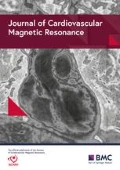Purpose
Most deaths in thalassemia major (TM) result from cardiac complications due to iron overload. No data are available in literature about possible different changes in cardiac iron in TM patients treated with sequential deferipron-deferoxamine (DFP-DFO) versus deferipron (DFP) and deferoxamine (DFO) in monotherapy. Magnetic Resonance (MR) is the unique non invasive suitable technique to evaluate quantitatively this issue. Our aim was to prospectively assess in the clinical practice the efficacy of the DFP-DFO versus DFP and DFO in monotherapy in a cohort of TM patients by quantitative MR.
Methods
Among the first 739 TM patients enrolled in the MIOT (Myocardial Iron Overload in Thalassemia) network, 253 patients performed a MR follow up study at 18 ± 3 months according to the protocol. We evaluated prospectively the 25 patients treated with DFP-DFO versus the 30 patients treated with DFP and the 66 patients treated with DFO between the 2 MR scans. Myocardial iron concentrations were measured by T2* multislice multiecho technique.
Results
Excellent/good levels of compliance were similar in the 3 groups (DFP-DFO 96% versus DFP 97% versus DFO 92%; P=0.67). Among the patients with no significant myocardial iron overload (MIO) at baseline (global heart T2* ≥ 20 ms), there were no significant differences between groups to maintain the patients without MIO (DFP-DFO 95% versus DFP 100% versus DFO 100%; P=0.23). Among the patients with MIO at baseline (global heart T2* < 20 ms), only DFP and DFO showed a significant improvement in the global heart T2* value (P=0.001 and P=0.003, respectively) and in the number of segment with a normal T2* value (P=0.031 and P=0.0001, respectively). The improvement in the global heart T2* was significantly different among groups (mean difference global heart T2* DFP-DFO 2.2 ± 4.1 ms, DFP 10.7 ± 7.2, DFO 3.6 ± 5.4; P=0.007). The improvement in the global heart T2* was significantly lower in the DFP-DFO versus DFP group (P=0.014), but it was not significantly different in the DFP-DFO versus the DFO group (P=0.63) (see figure 1).

Conclusions
Prospectively in a clinical setting over 15 months we did not find significant differences on cardiac iron in TM patients treated with sequential DFP-DFO versus the TM patients treated with DFO. Conversely, DFP monotherapy was significantly more effective than DFP-DFO in improving myocardial siderosis.
Author information
Authors and Affiliations
Rights and permissions
This article is published under license to BioMed Central Ltd. This is an open access article distributed under the terms of the Creative Commons Attribution License (http://creativecommons.org/licenses/by/2.0), which permits unrestricted use, distribution, and reproduction in any medium, provided the original work is properly cited.
About this article
Cite this article
Pepe, A., Meloni, A., Rossi, G. et al. A T2* MRI prospective survey on heart iron in thalassemia major patients treated with sequential deferiprone-desferrioxamine versus deferipron and desferrioxamine in monotherapy. J Cardiovasc Magn Reson 13 (Suppl 1), P304 (2011). https://doi.org/10.1186/1532-429X-13-S1-P304
Published:
DOI: https://doi.org/10.1186/1532-429X-13-S1-P304

